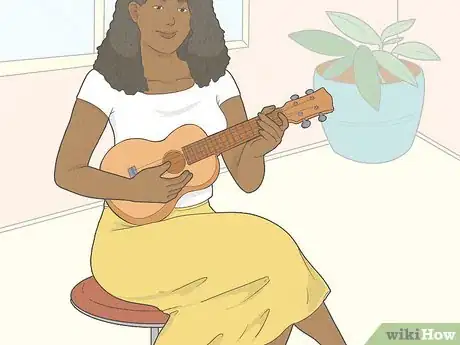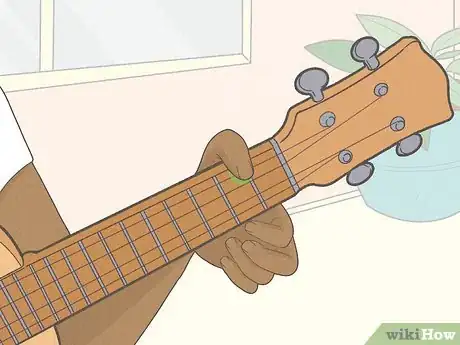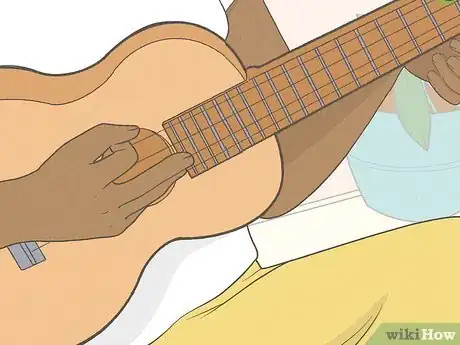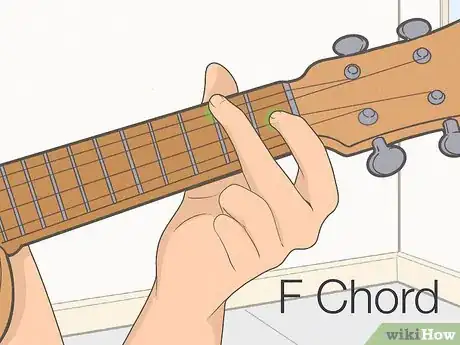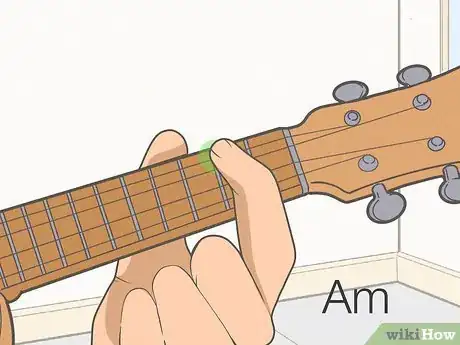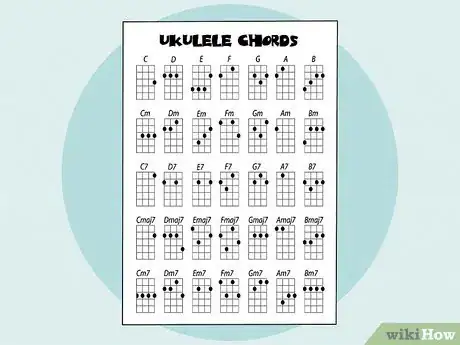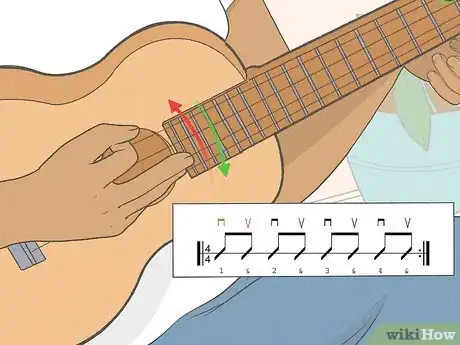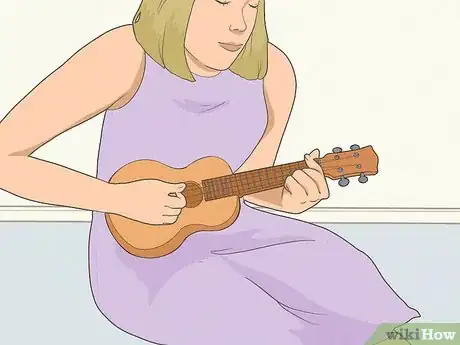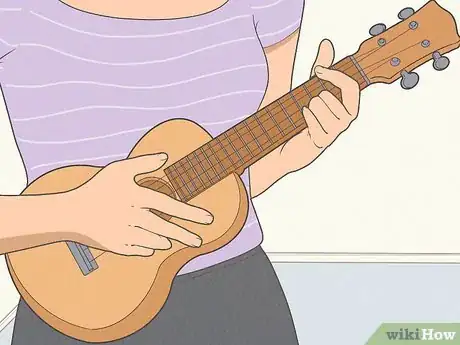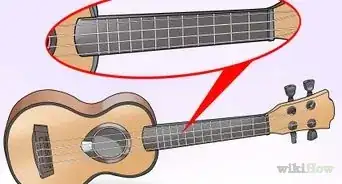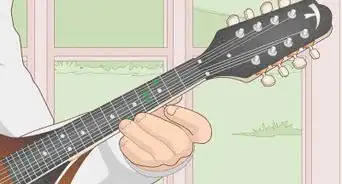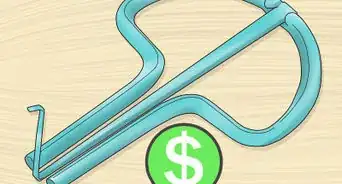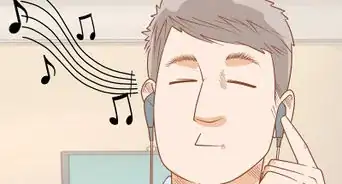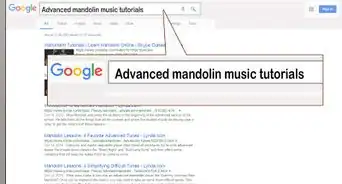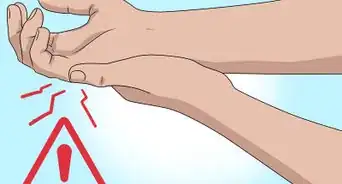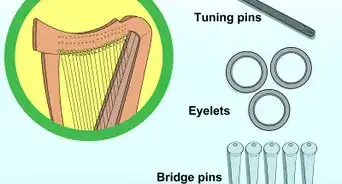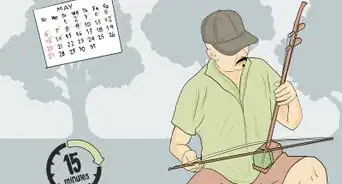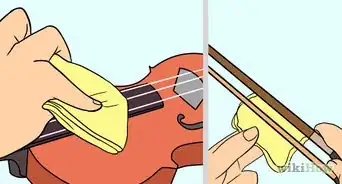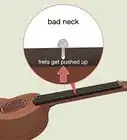This article was co-authored by wikiHow staff writer, Eric McClure. Eric McClure is an editing fellow at wikiHow where he has been editing, researching, and creating content since 2019. A former educator and poet, his work has appeared in Carcinogenic Poetry, Shot Glass Journal, Prairie Margins, and The Rusty Nail. His digital chapbook, The Internet, was also published in TL;DR Magazine. He was the winner of the Paul Carroll award for outstanding achievement in creative writing in 2014, and he was a featured reader at the Poetry Foundation’s Open Door Reading Series in 2015. Eric holds a BA in English from the University of Illinois at Chicago, and an MEd in secondary education from DePaul University.
There are 12 references cited in this article, which can be found at the bottom of the page.
wikiHow marks an article as reader-approved once it receives enough positive feedback. This article received 19 testimonials and 82% of readers who voted found it helpful, earning it our reader-approved status.
This article has been viewed 596,298 times.
Learn more...
The ukulele is a Hawaiian instrument with a carefree, jaunty sound. Its small size offers an ease of portability and gives players of all ages the chance to play and master it. Learn a bit about the basics of playing the ukulele, and eventually, you will be a great ukulele player!
Steps
Holding a Ukulele
-
1Orient the ukulele so the neck is in your left hand. The neck refers to the thinner, longer portion of the ukulele. Turn the ukulele so that the neck points away from you to the left. Due to the way the strings are ordered, it’s extremely difficult to learn to play if you hold the ukulele facing the other direction.[1]
- Restring the instrument if you’re a lefty. If you flip the instrument around and hold it from the other direction, you’ll have a really tough time learning the chords and practicing songs. You can restring a ukulele the same way you restring an acoustic guitar.
- There are a few different styles of ukuleles. You can learn on basically all of them except the baritone ukulele, which is really big and probably not what you’re holding if you’ve got a ukulele. The notes on this style of ukulele are a little different.[2]
-
2Stand or sit and brace the ukulele against your body. You can play standing or sitting. Either way, hold the ukulele a little below your chest with the neck pointing up at a 15-degree angle. Slide your right forearm on top of the body of the ukulele so that your right hand rests in front of the sound hole, which is the opening in the middle of the ukulele’s body.[3]
- You don’t support the ukulele from below if you play standing up. You simply pinch it against your body with your right forearm.
- If you play while sitting, you may find it easier to hold the ukulele by sliding your right leg over your left knee to brace the bottom of your ukulele with your right thigh.
- There are straps you can attach to the ukulele to wrap it around your neck like a guitar. You can use one of these if you want. Most players don’t use straps since ukuleles tend to be very light, but you can buy one if you’d like.
Advertisement -
3Rest your thumb on top of the first fret. The frets are the horizontal metal bars that separate notes and chords. Rest your left thumb on top of the topmost fret. Then, curl your 4 fingers underneath the neck so you can hold down strings from the other side of the neck. As you play, your hand may slide back and forth along the neck to hold down strings between other frets, but your thumb should always stay on top of the neck.[4]
- Your left hand should look a little bit like a letter C wrapping around the neck. It may feel a bit like you’re making a claw with your hand.
- If your hands are on the smaller side and you can’t reach the string on top from underneath, hold your thumb vertically against the back of the neck instead.
-
4Strum the ukulele with the side of your right index finger. Curl your right hand towards the strings over the sound hole. Stick your index finger out a little so you’re pointing perpendicular to the strings. Rest your thumb against the pad near your fingertip so that you’re making a teardrop shape with your thumb and index finger. To play, drag the side of your index finger along the strings so the tip of your finger brushes against the strings.[5]
- Unlike other stringed instruments, ukulele players almost never play specific notes. You’ll almost always strum all 4 strings when you play songs.
- You can use a ukulele pick if you’d like, but picks are not popular among ukulele enthusiasts. The ukulele’s soft notes tend to turn a bit harsh when you use a pick.
- If you watch professionals play, you may see them swinging an open hand up and down along the strings. Once you get good at strumming, you can drop the thumb and just play with the index finger. For now, keep the thumb against the index finger to maintain accuracy as you play.
Learning Notes and Chords
-
1Memorize the natural notes your strings make from bottom to top. You won’t play individual notes when you’re learning songs, but you must memorize them to make reading chord diagrams easier and understand the arrangement of the strings. Play each string on its own to identify the sound and commit it to memory. You’ll notice that the deepest sound is actually the highest string. This is because ukulele strings are arranged backwards. The top note (G or 4) is the deepest while the lowest note (A or 1) is the highest.[6]
- In order, the strings from bottom to top are A (1), E (2), C (3), and G (4). On chord diagrams and beginner sheet music, you will usually see the numbers and letters.
- This can get a little confusing because the “top” string is technically the “bottom” note if you’re talking about the sound. When you hear the phrase “top string” in tutorials, assume they’re talking about G (4), which is the lowest note.
- Use a tuner to make sure each string is playing the correct note. Turn a tuner on, clip it to your headstock, and play each note individually. Turn the tuner for each string until you find the perfect tone.
-
2Practice playing the easier major chords, starting with C and F. The major chords are the most commonly used chords. Start with simple chords like C and F. To play a C chord, hold down A (1) under the second fret with your ring or index finger and strum all 4 strings. Play this 4-5 times to get used to how it feels. To play F, hold down the E (3) string under the headstock with your ring finger and the G (4) string with your index or middle finger under the first fret. Play this 4-5 times to get used to the feeling and sound.[7]
- When you play, the fingers that hold the strings down are up to you. Most players use their middle, index, and ring fingers to reach the highest strings (G (4) and C (3)) and move the same fingers to hold down the strings underneath it. However, you can rely on your pinky finger to always play the bottom strings if you prefer. For complex chords, you’ll need to use your pinky and ring fingers on the bottom and your index and middle fingers on the top.
-
3Commit the other major chords to memory. The chords get a little more complicated after C and F, so master those first. Then, memorize the other major chords: D, E, G, A, and B. Start with A, which only relies on 2 fingers to hold down C (3) under the headstock and G (4) on the second fret. D, E, G, and B all require 3 fingers, so learn those last. Practice playing each of the chords to get used to playing all of them.[8]
- It may take 2-3 weeks to get used to all of these major chords. Luckily, there are plenty of songs that only rely on major chords if you want to play some songs! U2’s “Still Haven’t Found” only relies on C, F, and G, while Sublime’s “What I Got” only requires D and G.
- For chords that involve holding down 2 adjacent strings along the same fret, use 1 finger to hold both strings down at the same time. You may want to learn D and E major last, since they both involve holding 3 strings down at the same time with the same finger.
- Don’t even worry about strumming in a pattern or rhythm yet. Just focus on learning the finger positions on the neck.
-
4Familiarize yourself with the minor chords once you learn the majors. On chord diagrams, a lower case “m” next to a letter indicates it’s a minor chord. The minor chords, Cm, Dm, Em, Fm, Gm, Am, and Bm aren’t much harder to learn than the major chords. Start by memorizing Am, which only involves holding down the G (4) string under the second fret. Then, move on to practice the other minor chords and commit them to memory. Spend 2-3 weeks learning these chords.[9]
- The minor chords aren’t more complicated than major chords, but it’s better to learn chords in groups so that you have an easier time memorizing them and internalizing the sounds.
- There are thousands of songs that only rely on major and minor chords. You can start learning some full songs once you’re at this point and work on the remaining chords as you play over time if you’d like.
-
5Memorize the seventh chords after mastering the majors and minors. Each chord has a “seventh” version. Within these chords, there are minor and major versions. For example, there is C7, Cmaj7, and Cm7. This means that there are 21 additional chords to learn, and most of these chords involve holding 4 strings down. Since these are the most complicated chords, learn these over time as you continue practicing. Start with the pure seventh chords, then move on to the majors. Finish by learning the minors.[10]
- You can easily play thousands of songs without the major and minor seventh chords. If you want to take it slow, just learn the basic seventh chords (A7, B7, etc.) and leave the majors and minors for later.
- One easy way to do this is to learn a new chord every day. Spend 10-15 minutes each day practicing your finger positions for a new chord.
- Try not to get overwhelmed. Many of these chords are quite easy to learn. For example, you can play Bm7 just by holding down all the strings under the second fret. Cmaj7 is identical to C major but you just move your finger up one fret.
-
6Pull up a chord diagram to refer to the finger positions for chords. Chord diagrams are images that relay finger positions for ukulele players. Pull up a chord diagram to refer to the finger positions. To read chord diagrams, pretend the neck is sitting vertically in the image so the strings are facing you. Each horizontal line represents a fret, while each vertical line is a string. The dots show you where your fingers go to play specific chords.[11]
- You always play all four strings together when you’re strumming the ukulele to play a chord.
- You can find a solid beginner’s chord diagram at https://i.pinimg.com/originals/4c/9a/93/4c9a93fe8b88afa2c9a43723d6fc7bf5.jpg.
Strumming
-
1Use a single chord to practice the 4 major strumming patterns. When it comes to the rhythm, there are 4 key strumming patterns. Since you can play a chord by dragging your finger down from G (4) to A (1) (top to bottom), or back up from A (1) to G (4), you can create different moods by strumming the strings in different patterns. Practice the patterns to commit them to memory.[12]
- Down, down, down, down — Strumming only from the top to the bottom produces a kind of melodic, heavenly feeling.
- Down up, down up, down up, down up — Repeatedly strumming down and up creates a kind of mesmerizing, positive tempo. The famous “Somewhere Over the Rainbow” relies on this strumming pattern.
- Down, down up, down, down up — With this pattern, the up strums turn a 4 beat into a 2 beat. This produces a kind of slower, somber pattern in most songs.
- Down, down up, up, down up — This is the opposite of the previous pattern. This places breaks in the 1 and 3 beat, which produces a kind of wondrous, ethereal sound.
-
2Read strumming patterns by following the Ds and Us as you play. On ukulele tutorials, the strumming pattern is listed under the chords. A “D” indicates a down, while a “U” indicates an up. A “DU” is a down and up on one beat. If you see a “/” it means that you’re supposed to take a pause.[13]
- On traditional sheet music, the downstrum is represented by a square missing its bottom side and up strums are indicated with a “V” shape. Unless you already know how to read sheet music, it’s easier to learn with the tutorial notations you’re more likely to find as you look for songs to play.
-
3Develop a natural swing with your downstrums. As you’re learning songs, always time your strumming so that you’re strumming down on the beat. In other words, if you see a DU under a C7 chord, time your playing so that you’re strumming down on the beat before strumming back up. While you’re dragging your fingers across the strings, keep the C7 chord held down the entire time.[14]
- Strumming in the right pattern is the hardest part of playing the ukulele for most people. Try not to get frustrated as you’re putting the strumming, timing, and chord positions together.
Practicing and Learning Songs
-
1Work on shifting between the chords you learn to get used to playing fluidly. For most people, the hardest part of playing the ukulele is switching between chords. When you start each practice session, review all of the chords you’ve learned so far by playing them one after another. This will help you get a sense for the kind of movements you need to make with your fingers to hold the strings down.[15]
-
2Learn some easy songs to put it all together. Go online and poke around for some ukulele song tutorials. Pick an easy song with a small number of chords. Start at the beginning of the song and play the chords in order using the strumming pattern listed alongside the chords. Practice playing the chords in a consistent tempo. Once you’ve learned an easy song, pick another one and keep going![16]
- Iz’s “Somewhere Over the Rainbow” is an easy, classic option. It relies on a down up strumming pattern for most of the song and only requires C, G, Am, F, and Em chords.
- ”You Are My Sunshine” is a fun, simple song that mainly relies on F and C. This is a great song if you’re working on your timing since the entire song is in downstrums with only 1 up strum.
- “Dreams” by Fleetwood Mac is a great song if you want to practice your chords since the finger patterns are kind of tough but the strumming is really straightforward.
- “Chasing Cars” by Snow Patrol is great option if you’re struggling to switch between different frets with your fingers.
-
3Continue practicing every day to learn more complex songs. Play your ukulele every day to continue improving, learn more chords, and master the strumming patterns. Spend at least 15 minutes a day practicing. As you master some simple songs, look online for tougher songs that will challenge your skills with more complex strumming patterns and chord progressions.[17]
- There are ukulele tutorials out there for basically every song you can think of. Choose songs you really love to make learning to play more fun!
- If you find any tutorials that don’t list the strumming pattern, that means it’s up to you. Some songs that are adapted for the ukulele don’t have built-in strumming patterns.
Community Q&A
-
QuestionHow hard should I press down on the strings?
 Community AnswerAs hard as it takes to produce a clean sound with no buzzing or flat notes.
Community AnswerAs hard as it takes to produce a clean sound with no buzzing or flat notes. -
QuestionWhy is it so hard to master the ukulele?
 Community AnswerWith a lot of practice and dedication, you can master it in less than 2-3 months! To start out, I learned the song Riptide since it is the easiest. I started from there, and one year later, as a 13-year-old, I've gotten far. I spend about an hour a day practicing and I stop myself in the middle of a song if my tune or singing or chord is off. Definitely practice and start out by learning simple chords, such as C, Am, Em, G, F, or A. Those chords are required in most songs.
Community AnswerWith a lot of practice and dedication, you can master it in less than 2-3 months! To start out, I learned the song Riptide since it is the easiest. I started from there, and one year later, as a 13-year-old, I've gotten far. I spend about an hour a day practicing and I stop myself in the middle of a song if my tune or singing or chord is off. Definitely practice and start out by learning simple chords, such as C, Am, Em, G, F, or A. Those chords are required in most songs. -
QuestionIs it okay if the strings are nylon?
 Community AnswerYes. Everybody usually starts with nylon strings. The majority of ukulele players are playing on nylons, and if you are new to ukulele, than nylon is the best choice.
Community AnswerYes. Everybody usually starts with nylon strings. The majority of ukulele players are playing on nylons, and if you are new to ukulele, than nylon is the best choice.
References
- ↑ https://www.ukulelemag.com/stories/your-first-ukulele-lesson-a-beginners-guide-to-playing-ukulele
- ↑ https://youtu.be/5bTE5fbxDsc?t=38
- ↑ https://www.ukulelemag.com/stories/your-first-ukulele-lesson-a-beginners-guide-to-playing-ukulele
- ↑ https://youtu.be/5bTE5fbxDsc?t=138
- ↑ https://youtu.be/JKtPE3HfL5c?t=222
- ↑ https://youtu.be/5bTE5fbxDsc?t=52
- ↑ https://ukuguides.com/beginner/basic-ukulele-chords-for-beginning-players/
- ↑ https://ukuguides.com/beginner/basic-ukulele-chords-for-beginning-players/
- ↑ https://ukuguides.com/beginner/basic-ukulele-chords-for-beginning-players/
- ↑ https://ukuguides.com/beginner/basic-ukulele-chords-for-beginning-players/
- ↑ https://www.ukulelemag.com/stories/your-first-ukulele-lesson-a-beginners-guide-to-playing-ukulele
- ↑ https://youtu.be/gAScCO3Mb-w?t=93
- ↑ https://www.ukulele-tabs.com/learn-play/how-to-read-strumming-patterns-lesson-252.html
- ↑ https://youtu.be/58HRBAHREgg?t=112
- ↑ https://youtu.be/iT9-vjZpu0Q?t=227
- ↑ https://acousticbridge.com/easy-ukulele-songs-for-beginners/
- ↑ https://learnplayuke.com/advanced-ukulele-practice/
About This Article
To play the ukulele, first, rest the body of the instrument in the crook of your right elbow
and hold the neck of the ukulele between the thumb and index finger of your left hand.
When you play, you'll strum with your right hand, using the back of your fingernails as you go down the strings and the pads of your fingers as you come back up. You'll also press down on the fretboard with your left hand to play different notes. Next, learn the name of each string: G, C, E, A.Now, tune each string by ear or with the help of a tuner. Turn the knob until each string matches their corresponding note.
Once you’re comfortable holding and tuning the ukulele, practice four basic chords:
C Major, which you can play by placing your ring finger on the third fret of the first string.
G Major, which you can play by placing your index finger on the the second fret of the third string, your middle finger on the second fret of the first string, and your ring finger on the the third fret of the second string.
A Minor, which you can play by placing your index finger on the first fret of the second string and your middle finger on the the second fret of the fourth.
F Major chord, which you can play by placing your index finger on the the first fret of the third string and your middle finger on the the second fret of the fourth.
Practice switching from one major chord to another to form a progression.

